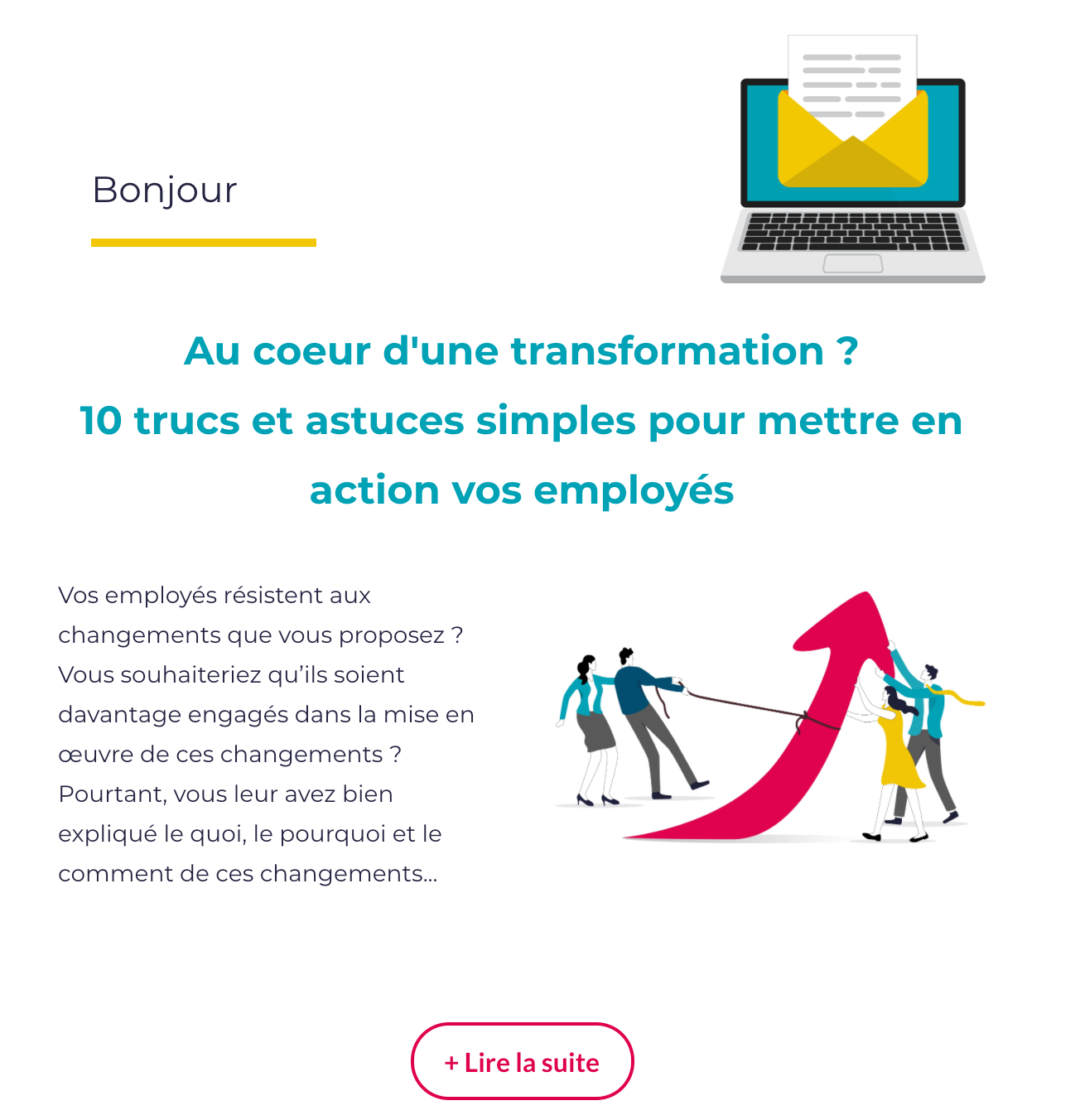Leveraging Change series – Engaging the entire organization
n recent months, I started to share with you my views concerning the levers required for sustainable changes. They are all important, however if implemented separately, they have less impact. This is also true for this third lever: engaging the entire organization.

A lot has been said on the subject, for a long time. But why involve people? “They’re too busy; they don’t have the time” and “The more people get involved, the more time it takes to get results and arguments inevitably ensue, etc.” Unfortunately, this is what I hear too often in my line of business. What if the reverse were true?
“They’re too busy; they don’t have the time.” It's true! I know very few organizations where resources have time to twiddle their thumbs, but ask someone to share his/her ideas and opinion and he/she will take the time needed. Now for more people to get involved in a project, in drafting requirements, identifying solutions, etc., we must rethink how we do things. It is unthinkable to have 200 Customer Service agents locked in a room for 8 hours to discuss their needs. But these days, so many new media exist to engage them. Suggestion boxes are a thing of the past.
It is now possible to create online collaboration platforms where requirements can be validated, solutions developed collaboratively with all relevant employees, etc. Some organizations will even go as far as creating a “cradle of ideas”. Prior to the start of projects, employees can brainstorm ideas that are improved upon by their colleagues. When an idea has well germinated, many discussions around it have taken place, and a consensus begins to be built, you simply need to pick it and create a project to implement it. Imagine how project delays are then reduced, and how the motivation and engagement of employees are high.
It is like doing renovations. When you hire someone to do them, you are very critical. You can see every crack and every defect, and you insist on having the worker correct the situation. But when you spend hours yourself on repairing and painting a wall, you tend to be more forgiving: “... anyway, no one will notice ...” It is the same thing for your employees. If they are involved in the solution, they will accept the small inconveniences more readily.
This also relates to the other argument we always hear in our practice: “The more people get involved, the more time it takes to get results and arguments inevitably ensue.” This is another wrong assumption. It is best to involve more people before starting projects so they become clearer from the onset and consequently they take less time to achieve. We should not forget also the impact of this approach on the speed of change adoption and achievement of the expected results upon completion of the project.
However, let’s remind ourselves that for people’s commitment to be efficient, we must provide them with the means to get involved, the proper facilitating tools and well-defined objectives. Hence the importance of each lever for maximizing change effectiveness. How are you tackling these aspects in your organization?

